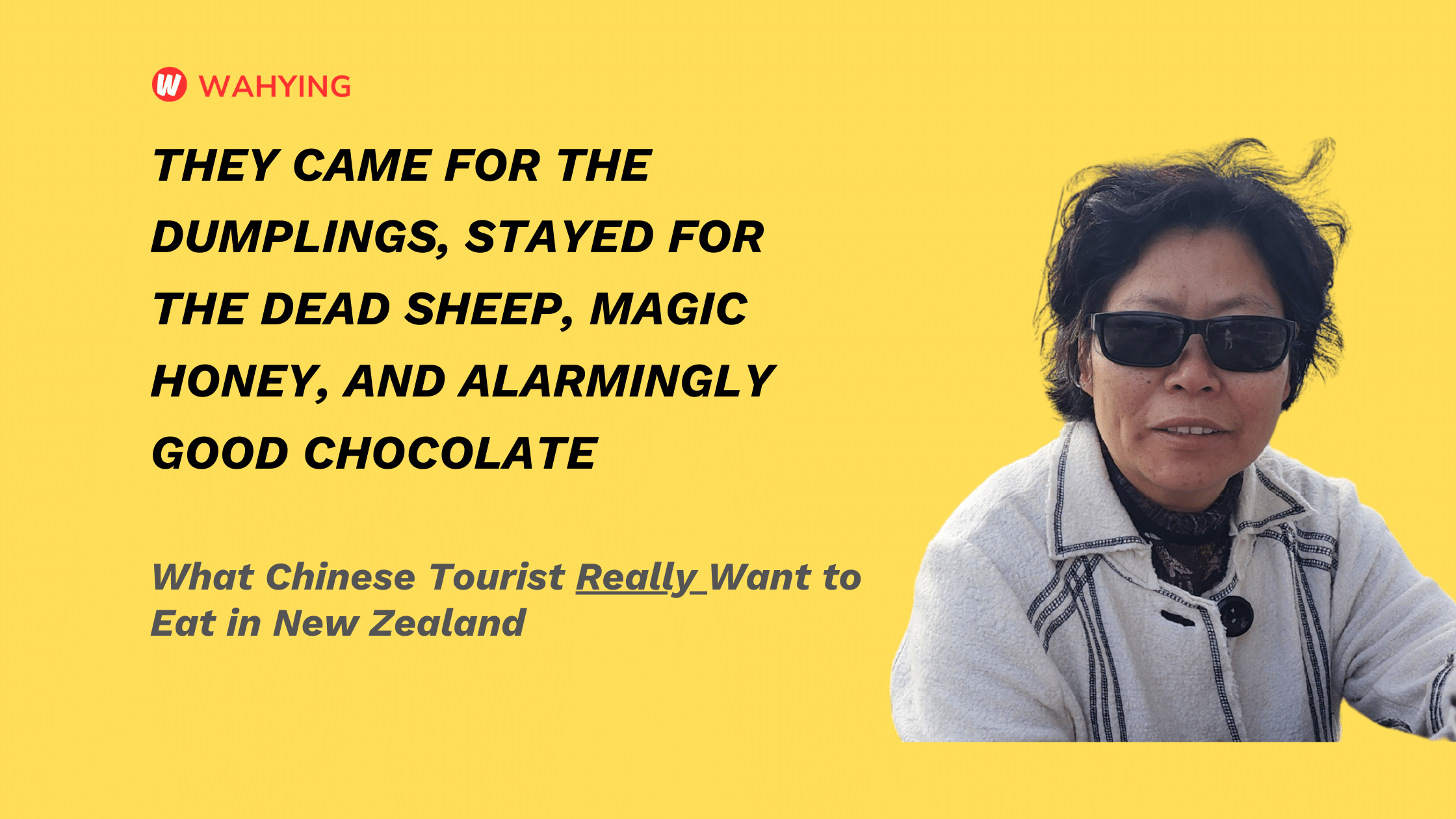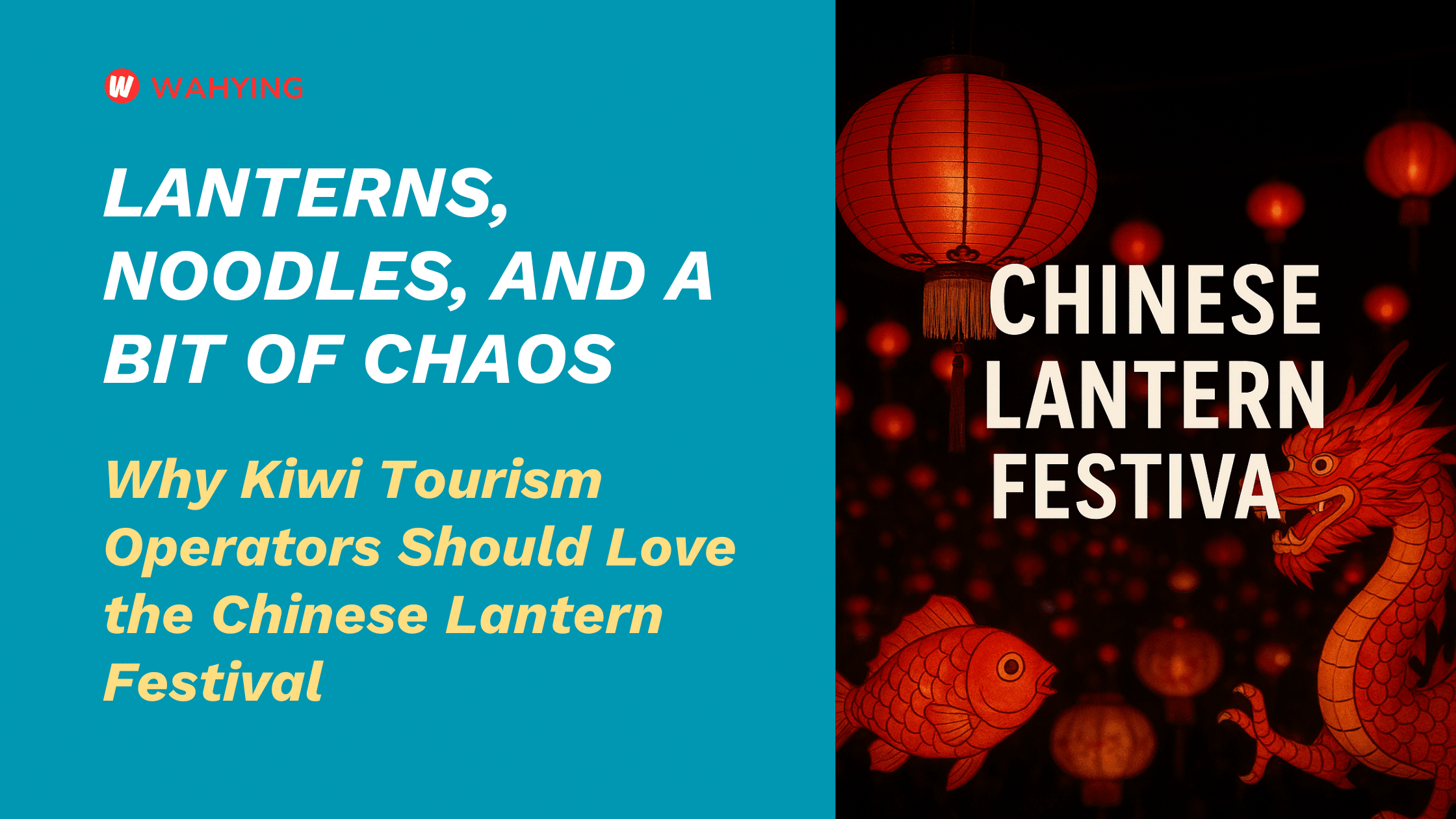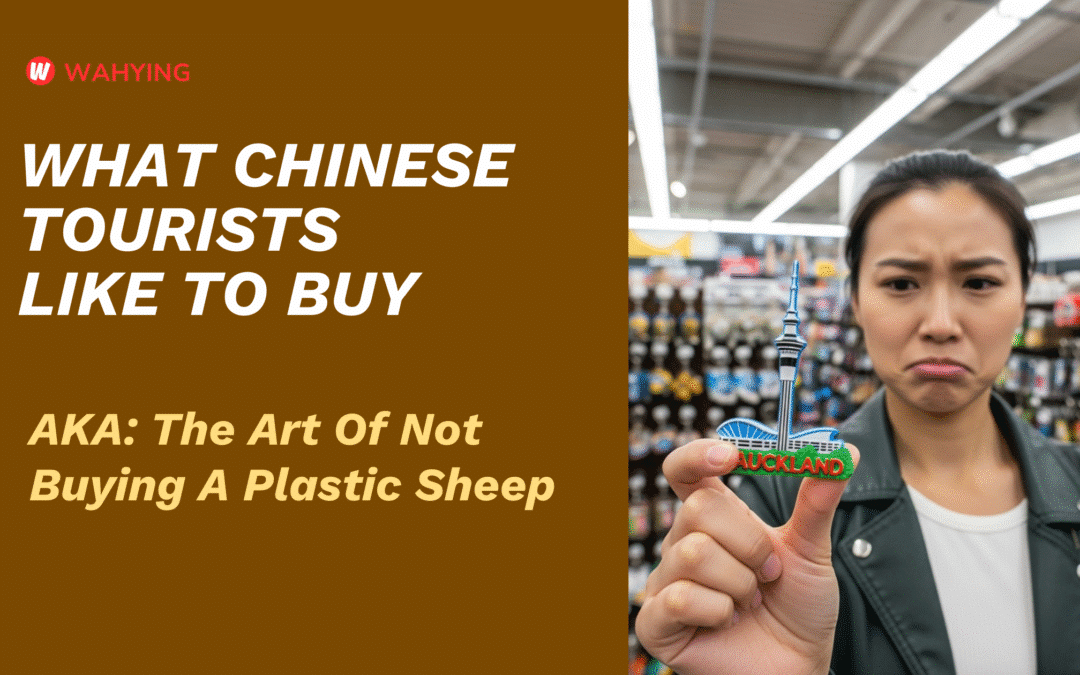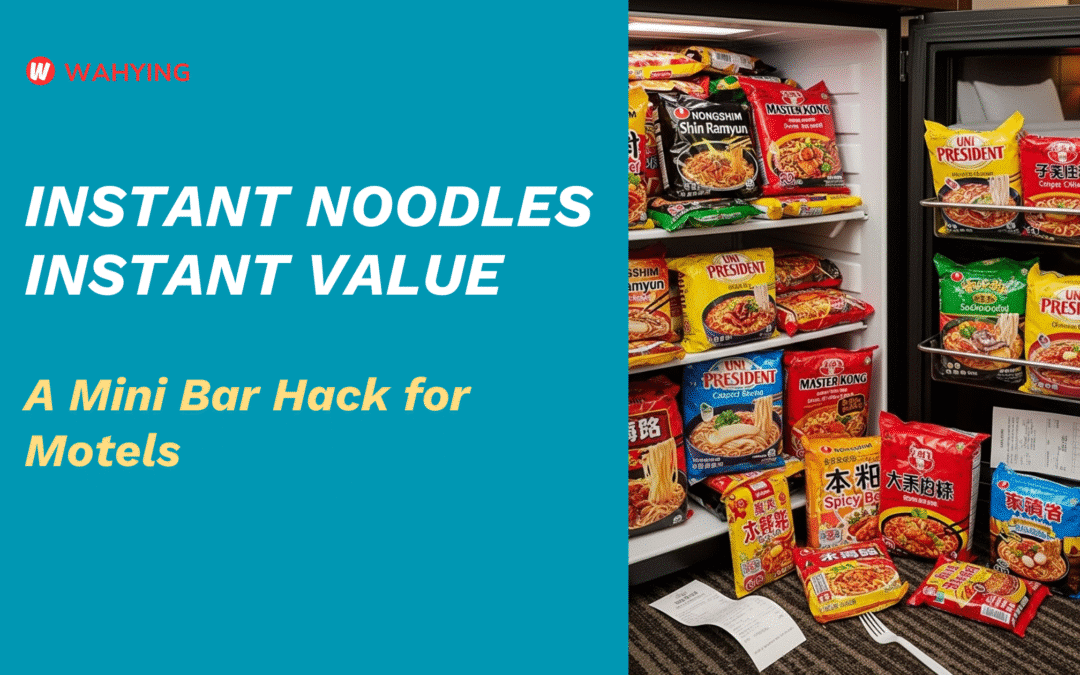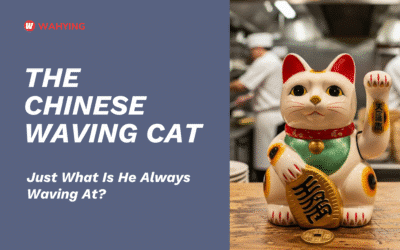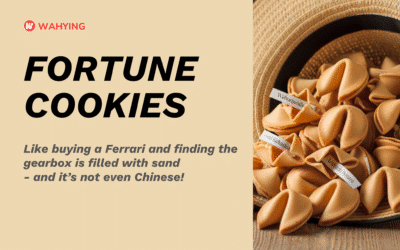They Came for the Dumplings, Stayed for the Dead Sheep, Magic Honey, and Alarmingly Good Chocolate
Aka What Chinese tourists like to eat in New Zealand
Some people travel the world in search of spiritual enlightenment. Others go for the Instagram photos. And then there are the Chinese tourists who, upon landing in New Zealand, a place famous for landscapes that look like a Windows XP screensaver and sheep that outnumber people, go straight in search of a good bowl of noodles.
Now, you might think: ‘They’ve flown 12 hours across the planet! Surely, they’ll want to dive face-first into a plate of roast lamb or snog a Bluff oyster!’ But no. The first port of call, even in the furthest reaches of the South Pacific, is often a Chinese restaurant.
Not just any Chinese restaurant, mind you. We’re not talking about the ones that smell faintly of detergent and despair. These tourists are looking for the real deal – steamed dumplings, crispy duck, and noodle soup that actually tastes of something. And the thing is… they’ll find it. Because New Zealand has this glorious, evolved version of Cantonese cuisine known as Kiwi Chinese. It’s like the original, but raised on clean air, better meat, and less MSG. In many cases, it’s arguably better than what you’d get back home.
So, here’s the setup: someone’s flown halfway around the world, only to order the exact thing they could’ve had in Beijing or Shanghai. It’s like taking a Ferrari to the shops for milk. But then, and this is where it gets interesting, something changes.
After the third plate of dumplings and the fourth bowl of pork belly, there’s a shift. A sparkle in the eye. A primal urge. The call of the wild Kiwi menu.
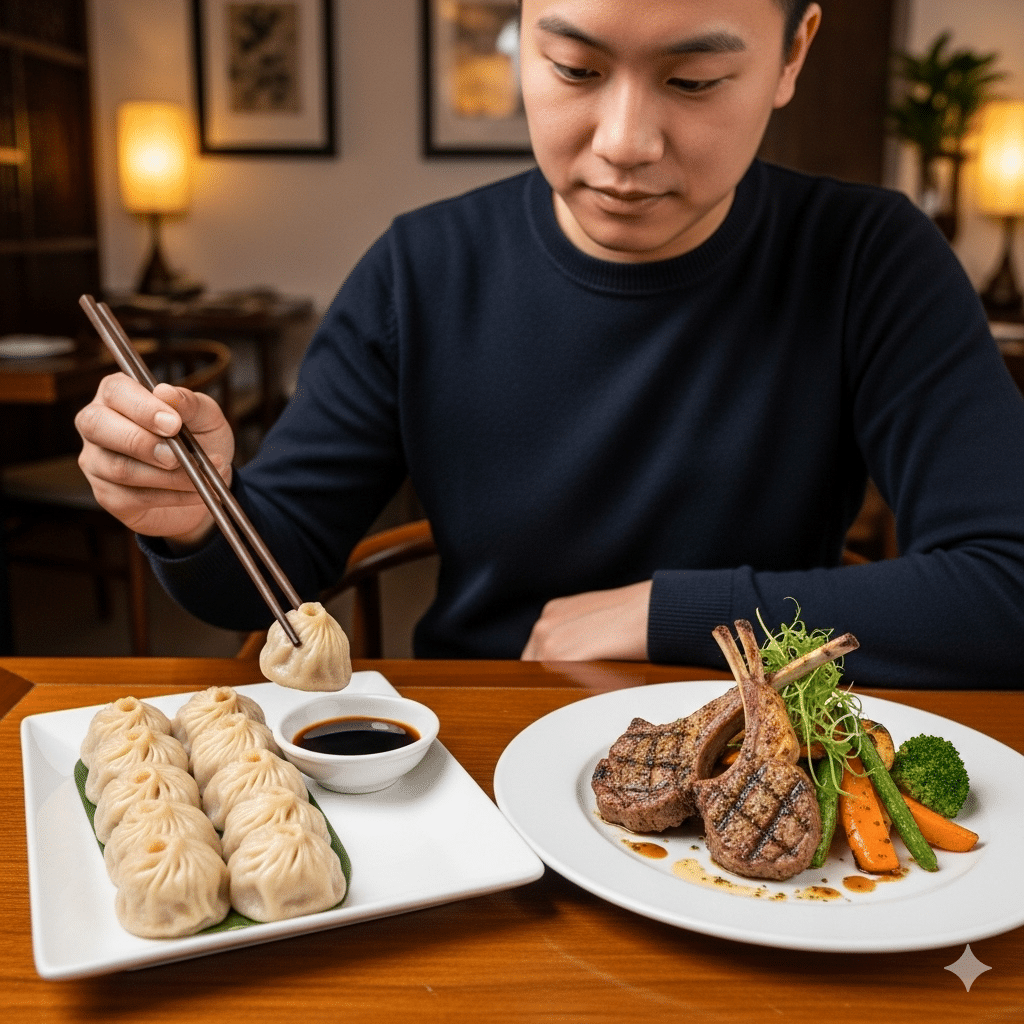
And suddenly, they’re elbow-deep in the local stuff: crayfish the size of small dogs, oysters so fresh they slap you when you open them, and green-lipped mussels that look like they’ve been engineered in a laboratory for seafood excellence.
Bluff oysters, in particular, are treated with the kind of reverence normally reserved for Rolls-Royces or very rare Pokémon cards. It’s not a snack – it’s an experience. You’ll see them in the fish markets, solemnly inspecting a crate of shellfish like it holds the secrets of the universe.
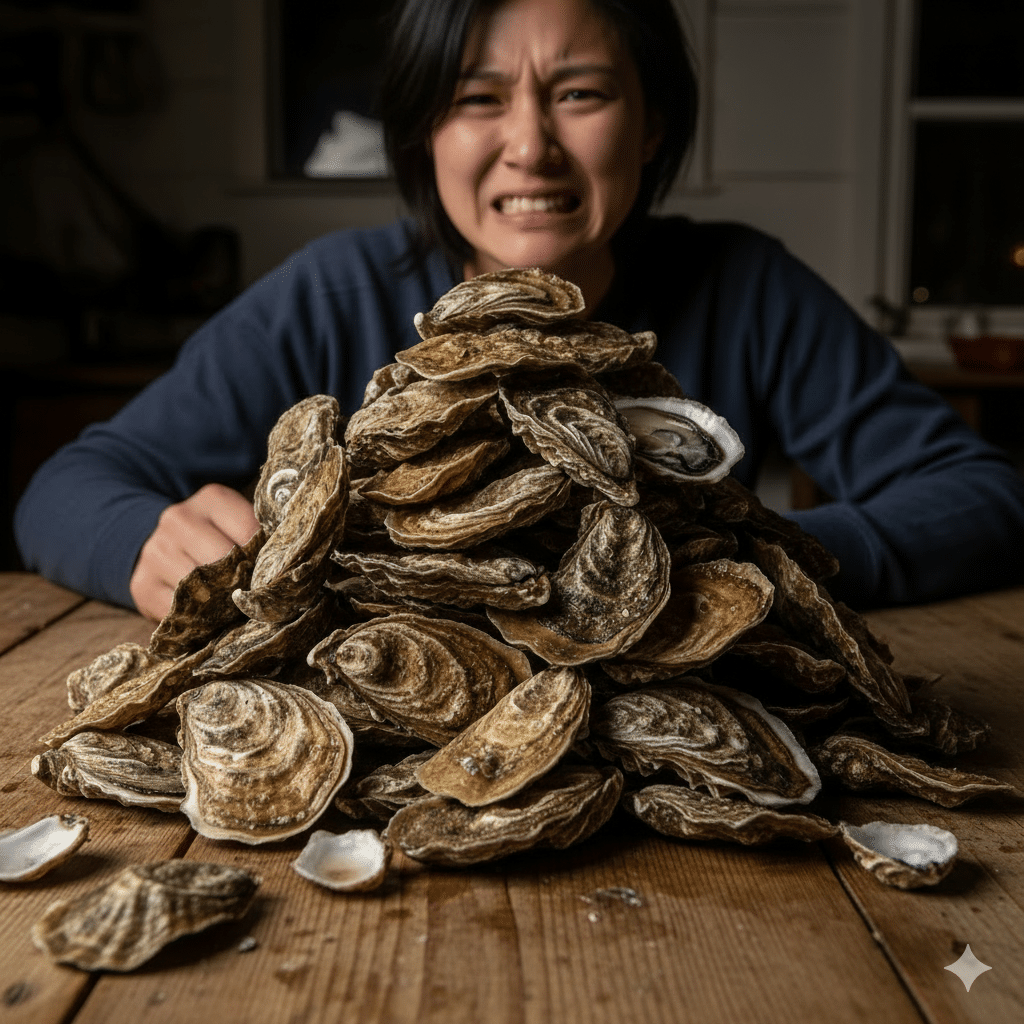
Then comes the lamb. Oh, the lamb. Tender, flavourful, and smugly organic. It’s the kind of meat that makes you feel like you’ve done something good for the planet just by eating it. And beef too. Rich, juicy, and unbothered by hormones or whatever nightmare additives they use elsewhere. It’s meat the way nature and angry farmers intended.
But the real prize? Manuka honey.
Yes, honey. Thick, dark, and allegedly blessed by ancient medicinal wizards – or so the marketing says. It’s not cheap. In fact, you could probably buy a second-hand car for the price of a decent jar. But that doesn’t stop tourists from buying it in bulk. Crates of the stuff. Pallets, even. Somewhere in China, there’s probably an apartment filled entirely with Manuka honey and powdered milk from New Zealand.
Because that’s another thing: the dairy. Chinese visitors love the milk, the cheese, the ice cream. Why? Because it tastes fresh. Clean. Like it came from a cow that’s been doing yoga on an organic farm overlooking a fjord.
Even the fruit and veg are a hit. Apples that crunch like you’re biting into a glacier. Kiwifruit that actually taste of kiwi. Lettuce that hasn’t been chemically sterilised six times before arriving on your plate.
And then, just when you think it’s over, they discover Whittaker’s chocolate.
Now, I’m not easily impressed by chocolate. Most of it tastes like brown candle wax. But Whittaker’s? That’s different. It’s smooth. It’s rich. It comes in slabs big enough to use as building materials. And the almond bar. Dear God, it’s like someone melted down a luxury sedan and rebuilt it in nut-studded perfection. It’s not chocolate. It’s engineering.
You see tourists buying Whittaker’s by the armload. And who can blame them? It’s the edible equivalent of discovering your car has a secret turbo mode.
So, what does all of this tell us?
It tells us that the Chinese tourist is operating on a genius level. They come to New Zealand and get the best of both worlds: the familiar comfort of home — and the exotic thrill of the unknown. One day it’s dumplings. The next, it’s oysters. Followed by some cheese. A kilo of honey. And a bar of chocolate that could very well ruin all other chocolate forever.
Frankly, it’s a clever way to travel. More clever than most. It’s not just a holiday – it’s a culinary reconnaissance mission. A taste of what you know, and a taste of what you didn’t know you bloody loved.
And what you didn’t know, it turns out… is delicious.

